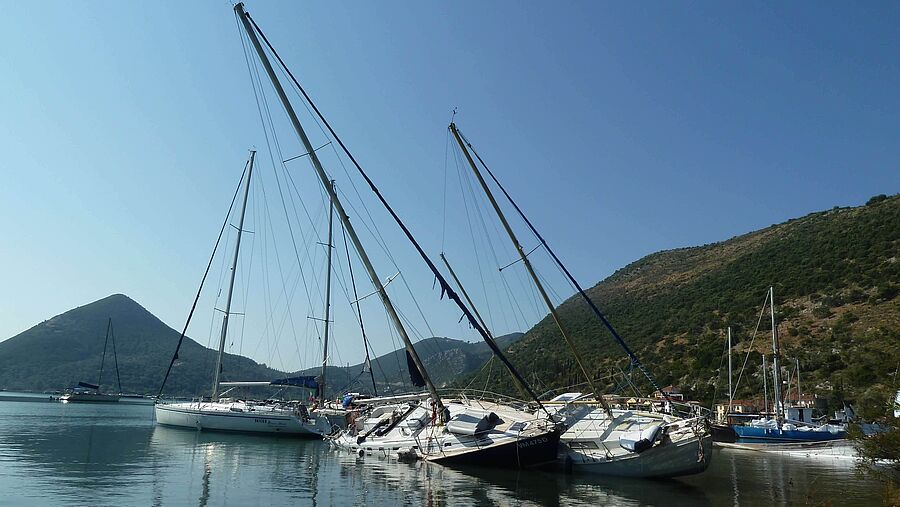
* Pantaenius UK Limited is authorised and regulated by the Financial Conduct Authority (Authorised No.308688)
With the arrival of spring or autumn, we all know that stormy times are ahead, and this represents an obvious risk for sailing enthusiasts. Whether at sea, in the harbour or on land – the right preparation is essential to ensure that vessel and crew can survive a storm with minimum damage.
It is often the little things that make all the difference. An extra fender here, another stern line there, keeping a regular eye on the shipping forecast or checking your equipment beforehand as a precaution. Nonetheless, storm damage occurs again and again due to lack of adequate preparation and seamanship. WHERE ARE YOU SAFEST?

At first, it may sound a little paradoxical: in the event of a storm, it is sometimes better to be on the high seas rather than close to the shore. This is because the nearer you get to the land, the shallower the water. In shallower waters, short, steep waves can build up, which not only put the vessel under considerable strain but can also rapidly wear down the crew. Thus, if you cannot get to a sheltered harbour, it may be better to weather the storm at sea. In Mediterranean marinas, for example, the yachts are densely packed together in summer, with “Med mooring” perpendicular to the pier or with bow anchors and stern lines. Any that swell builds up during a storm will often result in considerable damage.
SAFE IN THE HARBOUR
No question about it – your vessel should be safely and securely moored in the marina whatever the weather conditions. Forward and aft springs, together with bow and stern lines, hold the yacht in position, elastic rope with a high breaking load can absorb any jolting motion, while fenders on the hull and stern protect against contact with the pier or neighbouring vessels. When a storm approaches, additional measures must be taken. Check all mooring lines for any signs of wear or chafing; replace any damaged lines.
Make sure you have additional lines and fenders which can be used for rapidly securing the vessel in an emergency. And – it almost goes without saying – moor your vessel in such a way that wind, waves and current will push your boat away from the quay and not onto it. GOOD PREPARATION FOR TRIPS Another important factor is thorough, responsible planning and preparation for trips. This must include providing a detailed briefing to the crew. Particularly in the case of charter trips, the owner should insist on the crew being given a detailed briefing, so that even in heavy weather all crew members know exactly what to do: How do the valves work? Where are the emergency cutters? What do the storm sails look like? Once the storm has arrived, it is too late to do this.
Apart from the hurricane areas in the Caribbean (see info box below about the Hurricane Clause), Pantaenius does not have a specific catalogue of requirements that you need to observe during heavy weather. Every sailing enthusiast should display common sense and good seamanship. As the saying goes: always behave in the way you would advise your loved ones to behave. Listening to the shipping forecast on a regular basis, avoiding the lee shore during storms, reefing in good time and adjusting your speed to the circumstances – these are just a few points that should be self-evident.
WHAT IS THE HURRICANE CLAUSE?
Pantaenius played a decisive role in developing the “Hurricane Clause” after Hurricane Ivan had raged so severely over Grenada in 2004. The clause specifies the measures to be taken when a hurricane is announced by the National Hurricane Center in Florida (www.nhc.noaa.gov). The Hurricane Clause, which has now become the guiding principle for many insurers, has helped to significantly reduce losses from hurricane damage. Since the entry into force of the clause, owners have paid much greater attention to preventive measures, in order not to lose their insurance cover.
AT A GLANCE
• Regularly consult and check the shipping forecast
• Find a suitable mooring or anchoring place and secure the vessel with additional lines
• Regularly inspect and test safety-relevant equipment, e.g. storm sails
• Make sure the crew have been briefed on equipment and behaviour in the event of an emergency